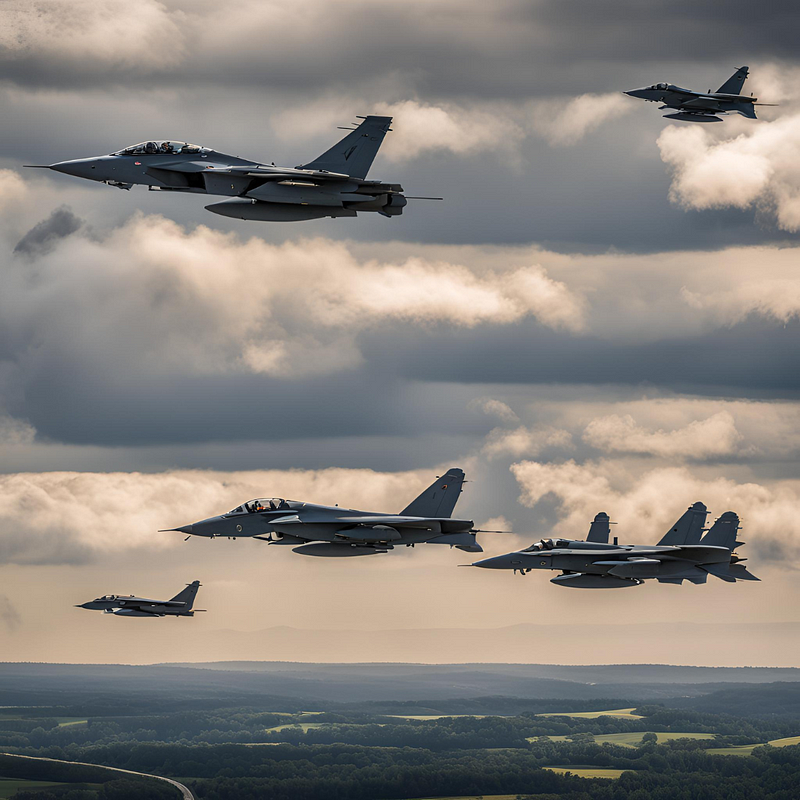Preparing for Conflict: Europe's Strategic Rearmament Efforts
Written on
Chapter 1: Current Geopolitical Landscape
Recent assessments indicate that the UK can only sustain a military engagement with Russia for a mere two months, while Germany's capacity is limited to just two days due to significant ammunition shortages. This alarming situation arises amidst one of the most precarious geopolitical climates in over thirty years, characterized by Russia's invasion of Ukraine, ongoing hostilities between Israel and Palestine, and China's ambitions regarding Taiwan.
In light of these challenges, Europe is increasingly prioritizing military rearmament to address decades of declining collective defense capabilities. However, the deterioration of Europe's military strength and the motivations behind the acquisition of F-35s by eleven European nations require deeper examination. The widespread adoption of the NATO-standard 155 mm artillery shell is not merely coincidental but a strategic necessity.
"In the backdrop of the Cold War, Europe and the Soviet Union prepared for an inevitable conflict, leading to the establishment of vast military arsenals."
Section 1.1: A Shift in Military Focus
During the Cold War, NATO and the Soviet Union developed extensive military forces equipped with cutting-edge technology. Fortunately, the anticipated World War III never materialized, resulting in Europe being left with substantial weaponry and equipment. The absence of a pressing threat led to a decline in military spending across the continent, as nations felt less urgency to invest in defense.
However, over three decades since the Berlin Wall's fall, European military equipment has aged, and ammunition supplies are critically low. European nations have contributed billions of dollars worth of arms and ammunition to Ukraine, further depleting their reserves.
Subsection 1.1.1: Artillery Ammunition Crisis

The shortage of artillery ammunition is particularly concerning. Most European countries use the NATO-standard 155 mm artillery shell, which has become alarmingly scarce since the onset of the Russian invasion. In early 2022, production levels for these shells were approximately 230,000 rounds annually, but by 2023, production surged to 400,000 due to increased demand. Projections estimate that by the end of 2024, production could reach 1 million rounds, with plans for 2 million by 2026. However, much of this output is earmarked for Ukraine under the "Act in Support of Ammunition Production" program (ASAP).
Section 1.2: Importance of Standardization
The widespread use of the same artillery shells among NATO countries is strategic. Should NATO's Article 5 be invoked, all member states would need to operate as a unified military force rather than as individual armies. Standardizing equipment is essential to avoid logistical complications.
The interoperability of ammunition allows for shared resources across nations, which is vital for efficient operations. For instance, the 5.56 mm round used in the British L85A3 is compatible with the French FAMAS and the German G36. The F-35 program also exemplifies this push for standardization, as NATO and EU members invest heavily in modernizing their air forces, with 600 F-35 Lightning II fighters ordered by eleven European nations, including Switzerland.
Chapter 2: Addressing New Threats
The first video, "Why Europe is Preparing for War," delves into the motivations behind Europe's military build-up in response to rising global tensions.
The second video, "Why Europe is Preparing for War Reaction," provides insights into the public's perspective on the rearmament efforts.
As Europe enhances its air force capabilities in response to Russia's advancements in hypersonic missile technology, the acquisition of stealth aircraft for precision strikes becomes essential. The UK has committed $1.26 billion to develop its own hypersonic missiles by 2030, while the European Defense Fund has allocated $1.2 billion for joint long-range fire capabilities, including hypersonic and counter-drone technologies.
To ensure rapid troop deployment in the event of conflict, NATO and European partners are establishing new land corridors, or ground lines of communication, for streamlined troop movements. The aim is to minimize bureaucratic delays while ensuring that arriving forces can quickly integrate into host nations' legal frameworks.
In recent years, multinational military exercises, such as Steadfast Defender, have increased in frequency and scale to improve joint operational readiness. The 2024 edition of this exercise marked the largest military mobilization in Europe since the Cold War, with participation from all 32 NATO countries.
Given that each European country cannot independently maintain a fully equipped military, responsibilities have shifted towards specialization, with nations focusing on specific areas of expertise to enhance collective defense. For example, Norway excels in arctic warfare training, while Estonia specializes in cybersecurity, responding to frequent threats from foreign actors.
Recent assessments reveal that NATO can only defend about 5% of its airspace, prompting an emphasis on developing a robust, multi-layered air defense system, particularly around coastal regions. Germany is spearheading the European Skyshield Initiative to create long-range systems capable of countering ballistic missile threats.
Finally, the specter of nuclear conflict looms large in discussions surrounding the current geopolitical climate. The UK and France remain the only European nations with independent nuclear arsenals, while the U.S. maintains tactical nuclear weapons in several NATO countries. As tensions rise, Poland has expressed interest in hosting American tactical nuclear arms as a deterrent against potential aggression from Russia.
While the prospect of nuclear escalation remains uncertain, the ongoing conflict in Ukraine continues to strain relations between Europe and Russia. NATO's rearmament efforts aim to bolster deterrence and ensure readiness for any potential escalation.